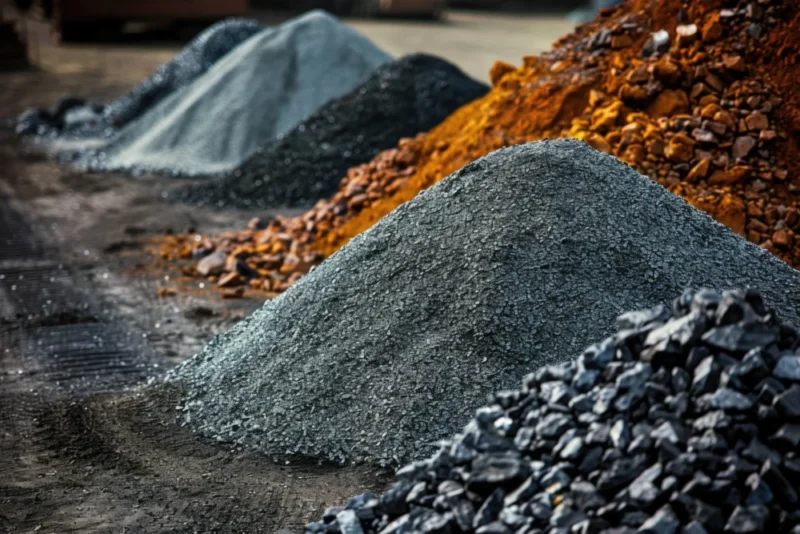Recycled steel is a valuable resource that can be used to reduce carbon emissions and conserve natural resources. However, the impurities present in recycled steel scrap often limit its potential use. In this article, we will explore the hidden challenges associated with impurities in recycled steel and investigate the technologies and methods used for their removal. We will evaluate the possibilities of various impurity removal methods and discuss their applicability to different industrial settings.
The Hidden Challenge: Impurities in Recycled Steel Scrap
Recycled steel has an immense potential for sustainability. However, one major hurdle that stands in the way of unlocking its full potential is the presence of impurities in recycled steel scrap. These impurities can range from non-metallic materials like dirt and paint to metallic contaminants such as copper and zinc. These impurities not only affect the quality of the final steel product but also pose challenges during the recycling process. They can lead to reduced strength and durability, as well as increased energy consumption during production. Addressing this hidden challenge requires innovative solutions that focus on efficient impurity removal techniques. By implementing advanced sorting technologies and exploring chemical treatment methods, the steel industry can overcome these impurity barriers and fully harness the benefits of recycled steel.
Physical Separation: Sorting Technology for Impurity Removal
In the quest to unlock the potential of recycled steel, one of the key challenges lies in the presence of impurities within the steel scrap. However, innovative sorting technology is emerging as a powerful tool for impurity removal. By utilizing various physical separation techniques, such as magnetic separation and eddy current separation, these technologies can effectively identify and separate impurities from the steel scrap. Magnetic separation, for instance, uses magnets to attract and remove ferrous impurities, while eddy current separation exploits magnetic fields to separate non-ferrous metals. These sorting technologies not only offer high efficiency but also enable large-scale processing of steel scrap. As a result, they hold great promise in overcoming impurity barriers and unleashing the full potential of recycled steel. With ongoing advancements in this field, physical separation methods are poised to revolutionize the recycling industry and pave the way for a more sustainable future.
Chemical Treatment: Exploring Methods for Impurity Elimination
Chemical treatment is a promising method for eliminating impurities in recycled steel scrap. Various chemical treatments have been explored, including the use of acids and alkalis to dissolve and remove impurities. One such treatment is the use of sulfuric acid, which has shown great potential in removing phosphorus from recycled steel. Another method is the use of calcium oxide, which can remove sulfur and silicon from the scrap. However, chemical treatments must be carefully controlled as they can also remove desirable elements from the steel. Additionally, they require significant resources and generate waste streams that need proper disposal. Despite these challenges, chemical treatment remains an important avenue for impurity removal in recycled steel scrap and further research is needed to develop more efficient and sustainable methods.
Evaluating the Possibilities: Applicability of Impurity Removal Methods
In the quest to unlock the potential of recycled steel, evaluating the applicability of impurity removal methods becomes crucial. With various techniques available, it is essential to assess their effectiveness in addressing the specific impurities present in steel scrap. Each method must be scrutinized for its ability to efficiently remove contaminants without compromising the quality and integrity of the steel. This evaluation process involves rigorous testing and analysis, considering factors such as cost-effectiveness, environmental impact, and scalability. By carefully evaluating the possibilities, researchers and industry professionals can determine which impurity removal methods hold the most promise for achieving high-quality recycled steel production on an industrial scale. This assessment will pave the way for developing innovative solutions that overcome impurity barriers and contribute to a more sustainable future for the steel industry.
Towards Industrial Scale Solutions: Overcoming Limitations in Impurity Removal
Industrial-scale solutions are essential to fully exploit the potential of recycled steel. Although physical separation and chemical treatment methods have proven promising in removing impurities from steel scrap, there are still limitations to address. One of the main challenges is the cost-effectiveness of these large-scale methods. The development of efficient and cost-effective technologies capable of handling high volumes of scrap is critical to the widespread adoption of impurity removal processes. Furthermore, ensuring the scalability of these solutions without compromising the quality of the final product is another obstacle to overcome.
At GME Recycling we are exploring innovative approaches, such as automation and advanced analytics, to optimize the impurity removal process and simplify industrial-scale operations. Overcoming these limitations will pave the way for a more sustainable and efficient steel recycling industry, reducing our dependence on virgin resources and minimizing environmental impact.
Comments are closed.

